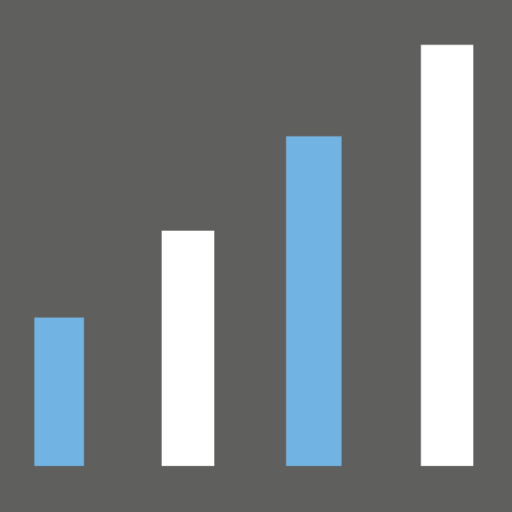Table of Contents
- Market Overview
- Market Size and Forecast
- Key Players in the Market
- Regional Analysis
- Market Segmentation by Type
- Carob Chocolate Market by Type Table
- Market Segmentation by Application
- Carob Chocolate Market by Application Table
- Growth Drivers
- Trends in the Market
- Opportunities in the Market
- Related Reports
- FAQ Section
Market Overview
The global Carob Chocolate Market is witnessing significant growth, driven by increasing consumer awareness of healthy food alternatives and the rising demand for vegan and allergen-free products. Carob chocolate, made from the roasted pods of the carob tree, offers a naturally sweet and caffeine-free alternative to traditional cocoa-based chocolate. This overview provides a foundational understanding of the current market landscape and its trajectory.
Market Size and Forecast
The global market for Carob Chocolate was estimated to be worth US$ 267 million in 2024 and is forecast to a readjusted size of US$ 663 million by 2031, reflecting a CAGR of 14.1% during the forecast period 2025-2031. This substantial growth is attributed to the increasing health consciousness among consumers and the expanding availability of carob chocolate products in various retail channels. The forecast indicates a promising future for the Carob Chocolate Market, driven by innovation and market penetration.
Key Players in the Market
The Carob Chocolate Market is characterized by a mix of established players and emerging brands. Key companies in the market include: D&D Chocolates, Missy J’s, The Carob Kitchen, PANOS Brands, Supertreats UK, Casa do Bosque, Uncommon Carob, Foundation Foods, Carob World, and Carob House. These companies are focusing on product innovation, strategic partnerships, and expanding their distribution networks to capture a larger share of the growing market. Their efforts are crucial in shaping the competitive landscape and driving market growth.
| Company Name | Headquarters | Product Focus |
|---|---|---|
| D&D Chocolates | Belgium | Carob Chocolate Bars, Chips |
| Missy J’s | USA | Organic Carob Treats |
| The Carob Kitchen | Australia | Carob Chocolate Products |
Regional Analysis
The global Carob Chocolate Market can be segmented by region, including North America (U.S., Canada, Mexico), Europe (Germany, France, UK, Italy, etc.), Asia Pacific (China, Japan, South Korea, Southeast Asia, India, etc.), South America (Brazil, etc.), and the Middle East and Africa (Turkey, GCC Countries, Africa, etc.). North America and Europe currently hold significant market shares, driven by health-conscious consumers and well-established retail infrastructure. Asia Pacific is expected to witness the highest growth rate due to increasing disposable incomes and a growing awareness of the health benefits of carob chocolate. This regional diversification presents opportunities for market players to tailor their strategies to local preferences and demands.
Market Segmentation by Type
The Carob Chocolate Market is segmented by type into Carob Chocolate Bars, Carob Chocolate Chips, and Others. Carob Chocolate Bars hold the largest market share due to their convenience and wide availability. Carob Chocolate Chips are also gaining popularity, driven by their use in baking and confectionery applications. The “Others” segment includes carob powder and specialty carob products, which cater to niche markets. This segmentation allows manufacturers to target specific consumer preferences and applications, further driving market growth.
| Type | Description | Application |
|---|---|---|
| Carob Chocolate Bars | Solid carob chocolate in bar form | Direct consumption, snacking |
| Carob Chocolate Chips | Small, chip-shaped carob chocolate | Baking, confectionery |
| Others | Carob powder, specialty products | Various applications |
Market Segmentation by Application
The Carob Chocolate Market is also segmented by application into Online and Offline channels. Offline channels, including supermarkets, convenience stores, and specialty stores, currently dominate the market due to their widespread presence and consumer preference for in-person shopping experiences. However, the online segment is experiencing rapid growth, driven by the increasing popularity of e-commerce platforms and the convenience of online shopping. This dual-channel distribution strategy is essential for reaching a broader consumer base and maximizing market penetration.
| Application | Description | Consumer Reach |
|---|---|---|
| Online | E-commerce platforms, online retailers | Global |
| Offline | Supermarkets, specialty stores | Regional, local |
Growth Drivers
Several factors are driving the growth of the Carob Chocolate Market. These include the increasing prevalence of lactose intolerance and other food allergies, which is driving demand for allergen-free alternatives. The rising awareness of the health benefits of carob, such as its high fiber content and antioxidant properties, is also contributing to market growth. Additionally, the growing vegan population and the increasing demand for plant-based products are creating new opportunities for carob chocolate manufacturers. These drivers collectively propel the Carob Chocolate Market forward.
| Growth Driver | Impact | Benefit |
|---|---|---|
| Lactose Intolerance | Increased demand for alternatives | Larger consumer base |
| Health Benefits of Carob | Attracts health-conscious consumers | Increased market share |
| Growing Vegan Population | Demand for plant-based products | New market opportunities |
Trends in the Market
Key trends in the Carob Chocolate Market include the development of innovative carob chocolate products, such as flavored carob bars and carob-based desserts. There’s also a growing emphasis on organic and sustainably sourced carob beans, reflecting consumer preferences for eco-friendly products. Furthermore, the increasing use of carob chocolate in the foodservice industry, including cafes and restaurants, is expanding its reach and visibility. These trends indicate a dynamic and evolving market landscape.
Opportunities in the Market
The Carob Chocolate Market presents numerous opportunities for growth and expansion. These include the development of carob chocolate products with added health benefits, such as probiotics and vitamins. There is also an opportunity to expand the distribution of carob chocolate products in emerging markets, where awareness of healthy food alternatives is growing. Additionally, collaborations between carob chocolate manufacturers and food retailers can create new marketing and promotional opportunities. These opportunities underscore the potential for continued growth and innovation in the market.





